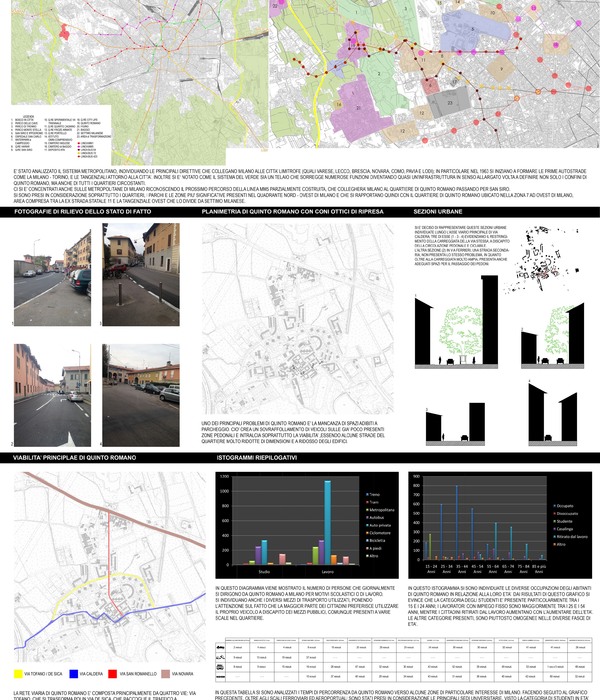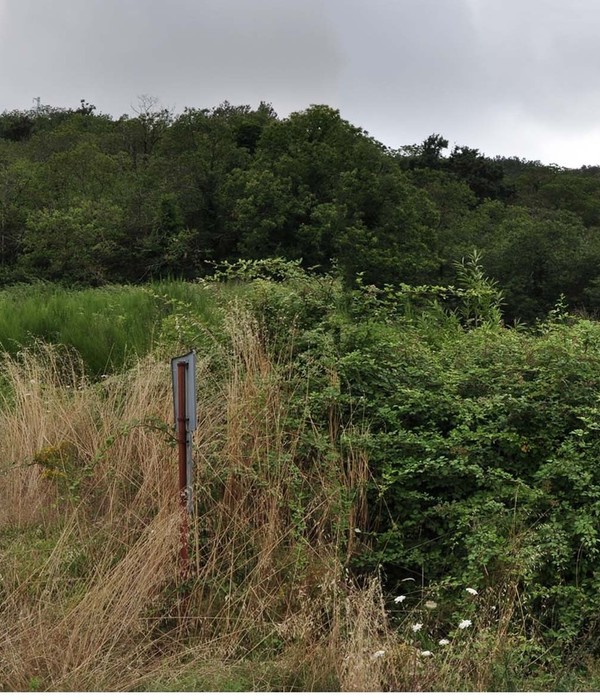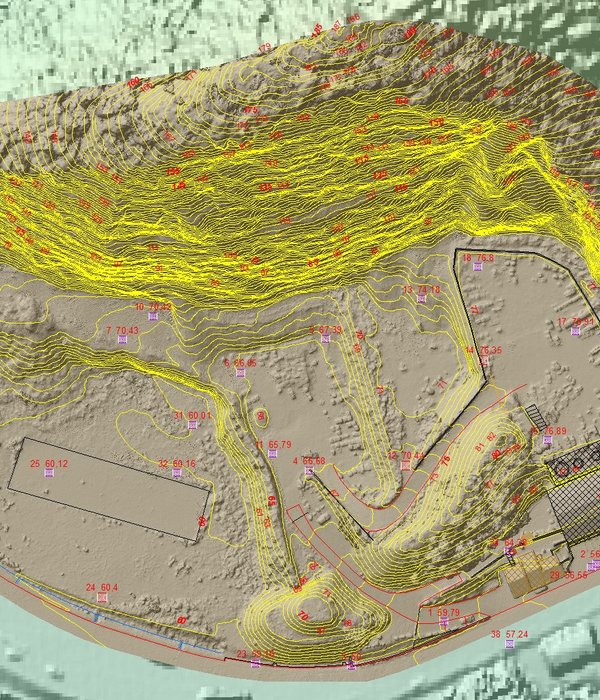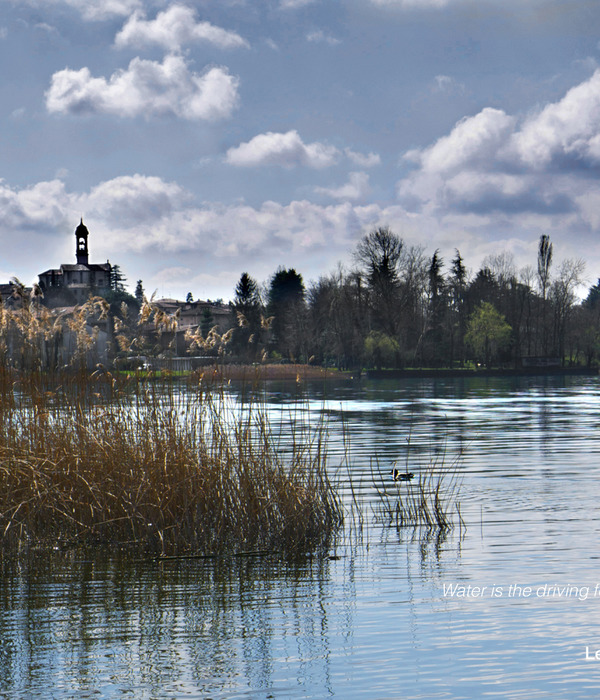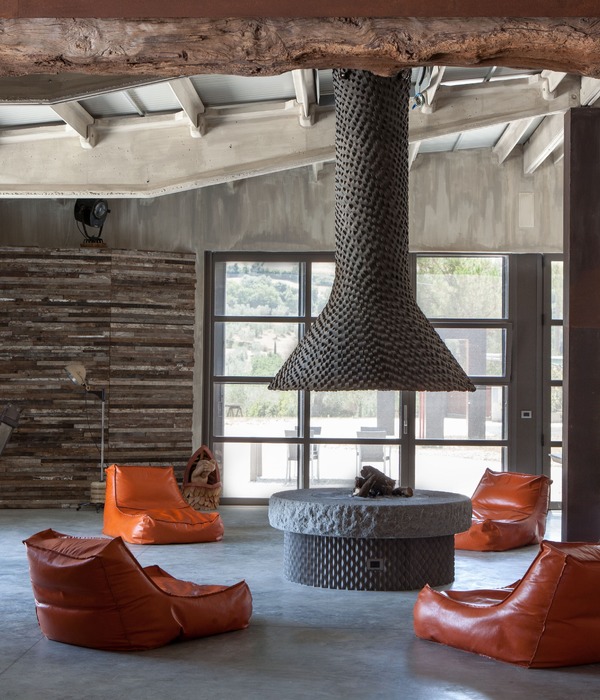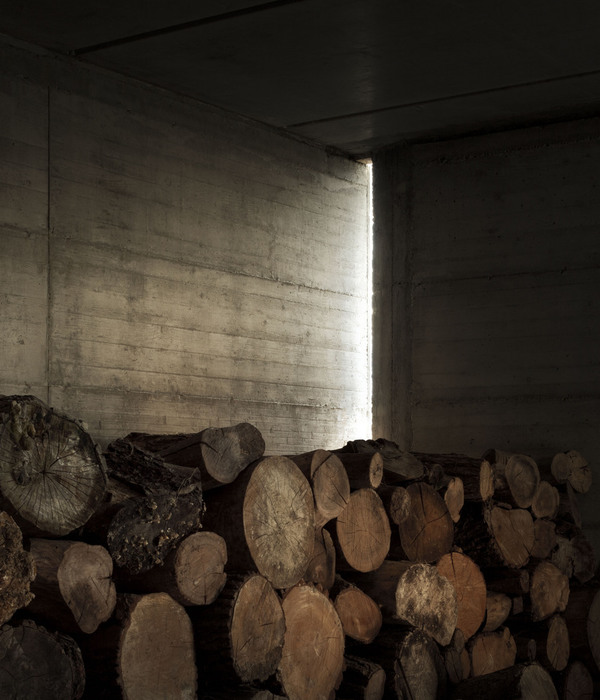“该项目涉及到复杂的政治和金融问题,而令人高兴的是,景观设计师在其中发挥着核心性的作用。” – 2018年评奖委员会
“I’m thrilled to see a landscape architect at the heart of a politically and financially complex issue like this, one that seems to really have significant momentum toward being implemented.” -2018 Awards Jury
项目概述 PROJECT STATEMENT
在科罗拉多斯普林斯和丹佛两座城市之间的前山走廊,每天都会有超过7万3千辆汽车穿行于此。这是一个发展迅速的区域,人口正以每月1000人的速度增长,城市的天际线也随着拔地而起的建筑发生着改变。尽管如此,在城堡岩的南部,仍有一望无际的山景浮现在由起伏的草坪、台地和牧场构成的天然背景当中。在I-25保护走廊总体规划实施之后,这条长达17英里的25号州际公路的分支仍旧保持着未开发的天然状态。这一切都要归功于环保组织、政府部门以及私人土地所有者之间史无前例的战略合作。在该项目中,自然保护基金会与景观设计师共同制定了一项策略,即让居民和政府官员参与到维护土地的行动中来,从而为走廊沿线的景观、水体、野生动物、空气质量提供长远有效的保护,同时带来更多休闲的机会。整体规划旨在为失控的城市扩张提供解决方案,并通过独特的规划手段和开发策略来实现一个前所未有过的目标:在科罗拉多州的前山沿线建立超过10万英亩的开放式保护区。
Over 73,000 vehicles travel the Front Range corridor between Colorado Springs and Denver on any given day. This area is growing fast. Population is increasing at a clip of 1,000 per-month and construction continues to change the skyline. South of Castle Rock, however, sweeping views of the mountains emerge amidst a pristine foreground of rolling grasslands, mesas and historic ranches. This unique 17-mile stretch of Interstate 25 lies undeveloped following the implementation of the I-25 Conservation Corridor Master Plan, the result of a strong strategic vision coupled with unprecedented cooperation among conservation organizations, government entities and private landowners. The Conservation Fund, in collaboration with the landscape architect, initiated a strategy to engage residents and government officials in conserving open lands to forever protect scenic vistas, water quality, wildlife, clean air and recreational opportunities along the corridor. Devised to offer solutions to the surrounding uncontrolled sprawl, the plan leveraged unique planning methods and limited development strategies to achieve what had been previously considered impossible: preservation of over 100,000 acres of open space along Colorado’s Front Range.
▲I-25走廊整体规划图。I-25走廊连接了科罗拉多州最大的两个城市,丹佛和科罗拉多斯普林斯,并为超过300万居民、工作者和游客提供服务。I-25 Development Patterns. I-25 connects Colorado’s two largest cities, Denver and Colorado Springs. This corridor is accessible to 3 million people who live, work and play here. Uncontrolled growth and endless suburban sprawl loomed as the probable outcome.
项目说明 PROJECT NARRATIVE
“如果说丹佛大都市区的发展可以用强劲一词来形容,那么道格拉斯县的发展则可以称得上是飞跃。随着I-25走廊在丹佛南部的建立,加上科罗拉多斯普林斯的城市发展,未来将会有大量的商业和房地产开发者将目光聚焦在道格拉斯的走廊沿线。” ——《丹佛商业杂志》
背景
对于许多城市和郡县而言,保护科罗拉多周的风景资源,尤其是前山沿线的环境几乎不可能实现。其原因一方面在于公有土地征收的成本过高,基础设施的建设缺乏秩序;另一方面则是碍于一项特殊的政策:该州的法律允许在不遵守分区制度和其他法规的情况下分割35英亩的土地。这意味着土地的所有者可以推翻任何非传统形式的规划。
I-25走廊沿线的无序发展促使环保组织、土地信托组织、当地社区、道格拉斯县政府和州政府部门共同组成了一个前所未有的联盟,旨在为该区域的环境提供保护。在景观设计师的领导下,这一跨学科的规划团队基于有限的资源开发了一套特殊的分析工具,能够找出最容易受到城市发展干扰的自然区域,并对区域中关键性的因素进行分析,包括观赏性、地形、土地覆盖、自然灾害、土地价值、分区、土地所有权、景观特征、野生动物的栖息和迁徙、地下水供应、休闲趋势、遗址分布和建筑开发状况等等。在对这些属性进行详细的分析之后,项目团队很快树立了一个初步的愿景,即为这一重要的开放区域提供长久的保护。这也标志着位于丹佛和科罗拉多斯普林斯城市之间的这片区域将发生一场大规模的转变。
随后,项目团队进行了一次公民调查,以确认居民对这一愿景的态度。这项调查的反馈十分热烈,居民对开放空间的保护高度重视,尤其是对那些栖息着重要野生动植物以及有溪水流经的土地。科罗拉多州的州长也参与到项目当中,认为该区域是“科罗拉多最壮丽的风景遗产地”之一。他的强烈支持为规划团队与各州政府机构的合作起到了十分积极的推动作用。在此基础上,I-25走廊整体规划得到了多方机构和社区的额外支持,并最终得以顺利实施。
保护措施
规划团队利用城市发展分析模型预测了走廊中最有可能被优先开发的区域,并将其与拥有重要自然和风景资源的区域进行匹配,以此来揭示出方案中潜在的冲突,以及需要优先被保护的区域。此外,通过收购土地或建立保护地役权的方式,规划团队取得了2万5千英亩核心场地的完全开发权,同时保留了场地中既有的休闲和农业用地。为土地赋予地役权的做法为土地拥有者带来了税收上的利益,不仅受到了公众的欢迎,也对土地的最终使用起到了积极而有效的影响。
除了核心区域之外,团队还确定了第二组具有针对性的保护场地,以便在不破坏自然资源的前提下建造有限的建筑集群。为了使该目标能够成功实现,项目团队需要证明开放空间对于社区开发的种种益处,以及保留额外土地对于提升周边土地价值的积极作用。这样一来,走廊中所需要开发的住宅单元数量以及需要花钱购买的开放空间数量均得以减少。
项目团队还通过政策建议来保证土地的最高质量,并为未来的开发提供可能性。项目资金被准确高效地分配到适宜的领域,为决策和谈判的顺利进行奠定了基础。该计划成功地鼓励了开发商在用地过程中充分考虑景区和自然资源的价值,同时也有助于让环保主义者相信,适度的开发将会对土地保护起到积极的推动作用。
成功落实
尽管有长远的眼光、公众支持和未来计划作为保障,但由于缺乏与场地定位、开发类型和开发速度相关的规范条例,项目的落实依然受到了一定程度的阻碍。
借助Great Outdoors Colorado信托基金提供的数百万美元的拨款,团队得以重新开展规划工作,并很快确定出了优先保护区域的位置。通过额外的筹资活动,团队还购得了原本属于高密度开发区域的土地,使规划中拟定的密度进一步降低。团队同时还提出,未来走廊沿线的土地开发项目将全部避开公共视野,并为所有剩余土地赋予永久的保护地役权,以最大程度地保护开放空间和自然景致。
在将“远景规划”变为现实的过程中,土地交易方面的复杂问题也在不断增加。为了使项目得以落实,自然保护基金也对项目进行了干预,购得了走廊沿线1300英亩的土地,为公众带来望向派克峰的优越视野。目前已经在实施的40栋房屋的道路和基础设施建设更突显了保护工作的紧迫性。景观设计师通过草图展示了坐落在敏感区域的住宅建筑群,并借此说服开发商重新进行规划,从而有效地将住宅建筑从公共视野中移除。这一最后关头的举措对项目的成功落实起到了至关重要的作用。
有效执行
I-25保护走廊整体规划的有效性可通过重要景观的保护成果来进行评估。基于严格的分析和一系列创新性的土地保护手段(包括购买未开发地块、建立保护地役权、限制开发策略和分区策略等),借助各州政府机构提供的资金与支持,前山地带的原始景观得到了充分的保护,避免了不可逆转的环境破坏。到目前为止,初期估价超过1.05亿美元的3万2千英亩的土地得到了收购和保护,最终的收购价格甚至低于市场价的30%。I-25整体规划不仅提出了保护自然景观和优质土地资源的有效方法和战略,避免了不正确的开发措施,更见证了一个地区的良性的、富有责任感的发展历程。
▲I-25走廊整体规划愿景。该规划项目旨在保护当地具有独特环境价值的区域。项目团队通过一系列非传统形式的规划实践,为32000英亩土地提供了保护。I-25 Conservation Corridor Master Plan Vision. The Master Plan was developed to preserve environmentally unique places at a regional scale. This plan introduced unconventional planning practices, resulting in the preservation of 32,000 acres of land and an alternative solution to the loss of open lands.
▲发展模式与预测。I-25走廊沿线的无序发展促使环保组织、土地信托组织、当地社区、道格拉斯县政府和州政府部门共同组成了一个前所未有的联盟,旨在为落基山脉的前山区域提供保护。Historic Pattern of Development and Forecasted Growth. Prompted into action by record and uncontrolled growth along the I-25 Corridor, environmental groups, land trusts, local communities, Douglas County, and state agencies formed an unusual coalition to create a regional conservation vision for Rocky Mountain’s Front Range.
▲山区草原和户外休闲区。该项目致力于为走廊沿线的景观、水体、野生动物、空气质量提供长远有效的保护,同时带来更多休闲的机会。Mountains Prairies and Outdoor Recreation. The vision of continuous scenic vistas from the eastern prairies to the mountainous landscape of the Front Range, combined with abundant public recreation, is the fundamental objective of the master plan.
▲农业、文化和历史价值。从对先前土地开发状况的分析中可以发现,走廊沿线最富有价值的是那些拥有优美风景和文化遗产的区域。Rural, Cultural and Historic Values. A review of previous development applications and non-subdivision transactions revealed that the highest land values along the corridor were in areas with the best views and often where there were cultural heritage features.
▲自然资源评估。公民调查显示,该区域的居民对开放空间的需求十分强烈。预测性的建模方法可用于确定最可能存在土地利用冲突以及最需要优先保护的区域。Assessing Natural Resources. Citizen surveys indicate that open space is highly desired by regional residents. Predictive modeling methods were important analytical tools used to determine where land use conflicts were most likely to exist and which lands were priorities for conservation.
▲确定优先保护次序。在确定需要优先保护的自然资源区域之后,在不影响乡村环境和开放空间的前提下进行建筑开发,能够对未来的发展起到积极作用。Determining Conservation Priority. It is possible to plan for future development by defining conservation and natural resource values first and then establishing locations for building sites which will not affect rural character or the values of open lands.
▲保护方法。整体规划通过独特的规划手段和开发策略实现了一个前所未有过的目标:在科罗拉多州的前山沿线建立超过10万英亩的开放式保护区。Conservation Methods.The plan leveraged multiple techniques and limited development strategies to achieve what had been previously considered impossible: preservation of over 100,000 acres of open space along Colorado’s Front Range.
▲风景保护。基于对景观价值的分析,规划保留了从大草原到山峰的大规模过渡景观,其中包括与国家森林公园相邻的派克峰。Scenic View Protection.Scenic views of the large-scale transition of prairies to peaks, including Pikes Peak on adjacent National forest lands, were preserved by utilizing tools to analyze intrinsic landscape values.
▲成长与发展模式。尽管有长远的眼光、公众支持和未来计划作为保障,但由于缺乏与场地定位和开发类型相关的规范条例,项目的落实依然受到了一定程度的阻碍。且该州的法律允许在不遵守分区制度和其他法规的情况下分割35英亩的土地。Growth And Development Patterns. Despite being armed with a vision and a plan for preservation, success was initially curtailed due to lack of County regulations directing location and type of development. Also, state laws exempted parcels greater than 35 acres from subdivision standards.
▲多方协作。环保组织、政府部门以及私人土地所有者之间史无前例的战略合作对资金的筹措和土地的征购起到了至关重要的作用。Collaboration. Collaboration between conservation organizations, private landowners, state, county and local governments, working together to leverage funding, was essential to realizing the vision and securing a multi-million-dollar grant for the immediate acquisition of parcels identified as priority conservation lands.
▲实现愿景。取得有价值土地的所有权是实施保护的重要手段。Realizing the Vision. The principal technique used to protect priority areas identified in the plan was acquisition of critical lands. Conservation easements were used to prevent development on sensitive lands. Public recreation was integrated with conservation, such as regional trail corridors.
▲以保护为前提的开发。未来走廊沿线的土地开发项目将全部避开公共视野,同时大幅降低居住区的密度,以最大程度地保护开放空间和自然景致。Conservation Based Development. Approved, yet unbuilt subdivisions were “replatted” to preserve and enhance open space characteristics. Detailed analysis of site features determined a development’s acceptable visual impact in the corridor and arranged contiguous open spaces with a great reduction in residential density.
▲在将“远景规划”变为现实的过程中,土地交易方面的复杂问题也在不断增加。规划团队创造性地将严谨的分析和规划方法与多方协作相结合,致力于保护科罗拉多州的开放空间。The complexities inherent in land transactions increased as the planning team transitioned from “vision planning” to implementation. The Master Plan creatively combined rigorous analysis and planning methodologies with a multi-faceted collaboration approach to protect Colorado’s legacy of open space.
▲基于强大的愿景,规划最终实现了对这一具有重要意义的自然走廊的保护,并在此基础上使开放空间、公共娱乐区、风景区和野生动物栖息地得到合理的发展。Starting with a powerful vision, this plan achieved preservation of a nationally important corridor with permanently protected open space, public recreation, scenic views and wildlife habitat. This vantage point is now reality for the forever protected and preserved landscape.
PROJECT NARRATIVE
“If growth expectations in metropolitan Denver are strong, Douglas County’s are at a gallop. With the coming explosion along Denver’s southern I-25 Corridor and development in Colorado Springs, commercial and real estate developers are positioning themselves in Douglas County along the Corridor.” – Denver Business Magazine
Context
Preserving land and scenic resources in Colorado, particularly along the Front Range, has proved virtually impossible for many cities and counties. This is due to rapid growth, high costs of public land acquisition, infrastructure policies that encourage sprawl and a unique exception in state law that allows subdivision of 35-acre parcels without adherence to zoning or other regulations. This exemption ensures that any traditional form of planning can be overturned by any property owner.
Prompted into action by record and uncontrolled growth along the I-25 Corridor, environmental groups, land trusts, local communities, Douglas County, and state agencies formed an unusual coalition to create a regional conservation vision.d A multi-disciplinary planning team, under the leadership of the landscape architect, worked with limited resources to create a unique set of analysis tools to identify areas of significant natural and scenic resources most vulnerable to development. Critical attributes of the landscape were analyzed, including scenic view corridors, topography, land cover, natural hazards, land value, zoning, land ownership, view characteristics, wildlife habitat and migrations, ground water availability, recreational trends, heritage sites and the status of development commitments. Once these attributes were analyzed and the significant resources understood, the team developed an initial vision for the permanent preservation of an area of significant open space marking a large-scale transition from prairie to peak between the expanding cities of Denver and Colorado Springs.
Next, a citizen survey was conducted to determine if area residents agreed with the vision. Feedback was overwhelming: residents placed a high priority on preserving open space, particularly lands where critical wildlife habitat and stream corridors were present. Even Colorado’s governor weighed in, suggesting that the region under consideration is “…one of the most gorgeous examples of Colorado’s natural heritage.” Because his support for the vision was so palpable, the planning team was able to engage many state agencies to help implement the vision. With the public and the governor’s office on board, the planning team sought to develop additional support for the I-25 Corridor Master Plan and gained commitments from a variety of agencies and communities needed to formulate a cohesive effort.
Conservation Methods
With support for the vision secured, urban growth analysis models were utilized to forecast locations throughout the corridor deemed likely to be developed first. These locations were then matched against areas with significant natural and scenic resources. The resulting investigation revealed both potential conflicts and preservation priority areas. It also directed the initial recommendation of permanent protection of a core area of 25,000 acres via acquisition or through the establishment of conservation easements, a measure which would effectively remove all development rights from a property while maintaining recreational and existing agricultural uses. The resulting tax benefit to landowners for placing an easement on their property was embraced by the public, ultimately influencing the land use outcome and making easements direct solutions for implementation.
In addition to permanent conservation of the core area, a second group of targeted conservation sites were identified for the establishment of limited clustered development on sites where impact to resources was minimal. For this scenario to be successful, however, it was imperative that the team highlight the benefits of open space to the development community. Emphasizing that preserving additional land effectively increased the value of the adjacent developed land, the team was ultimately able to measurably reduce the total number of residential units proposed for the corridor and minimize the amount of open space that needed to be purchased.
Beyond conservation easements and clustered development scenarios, the team employed policy recommendations to conserve the highest quality lands and allow for sensitive development in the future. Funding was allocated to areas where it would be most effective, forming the basis for informed decision making, consensus building and negotiation. Importantly, while the plan succeeded in encouraging developers to consider the value of scenic and natural resources in subdivision planning, it was also instrumental in convincing conservationists that appropriate development can support land preservation.
Achieving Success
Despite being armed with a vision, public support and a plan for future preservation, the plan’s success was curtailed due to the lack of County regulations directing location, type and pace of development.
The team’s refocused implementation of the planning efforts by securing a multi-million dollar grant from the Great Outdoors Colorado Trust Fund to allow for the immediate acquisition of parcels identified as priority conservation lands. Additional fund-raising facilitated the purchase of areas zoned for dense development, drastically decreasing the proposed densities. The team also proposed that all future development plans for land in the corridor purposely cluster and site houses out of public view, and place any remaining land in permanent conservation easements, ultimately preserving both open space and views in perpetuity.
The complexities inherent in land transactions increased as the planning team transitioned from “vision planning” to implementation. In a final push to complete the vision, The Conservation Fund intervened to secure a 1,300-acre property that provided the best public view of Pikes Peak along the corridor. The urgency of the conservation effort was highlighted by the fact that roads and infrastructure construction for 40 houses was already underway. Using napkin sketches created by the landscape architect illustrating sensitively clustered residential lots, the developer was convinced to replat the property, effectively removing all residential lots from public view. This eleventh hour change ultimately proved the extraordinary conservation success of the Corridor Master Plan.
Implementation Takes Hold
The effectiveness of the I-25 Conservation Corridor Master Plan can be measured through its efforts to preserve a significant landscape in distress. Through rigorous analysis, a variety of innovative land conservation methods (including purchase of undeveloped lots, conservation easements, limited development strategies and zoning changes to clustered development) and the support and funding received from various state agencies, a quintessential Front Range landscape on the verge of irreparable change was preserved. To date, 32,000 acres of land originally appraised at over $105 million have been purchased and protected for less than 30 percent of market value. The plan, which not only set forth methods and strategies to achieve a vision for the preservation of remarkable open lands with unmatched natural and scenic resources, also outlined a regional process that permanently limits poor development practices in favor of responsible development combined with preservation of open space.
{{item.text_origin}}



